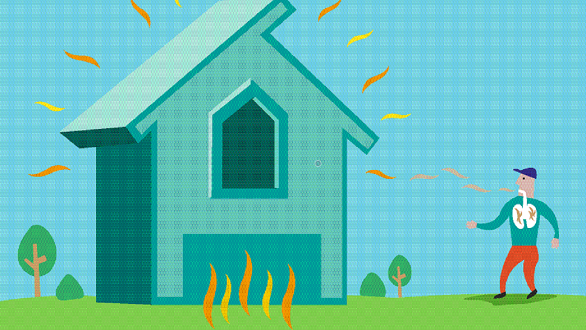It could be a home buyer’s worst nightmare: They purchase a new property only to discover later it is contaminated with methamphetamine, which is linked to health problems and can be very costly to eliminate.
In more than half of states, home sellers are required to disclose whether to the best of their knowledge a property has ever been used as a meth lab. But many laws stop short of letting buyers know if meth was ever smoked inside the property, which can also cause problems.
When produced or smoked inside a home, meth can seep into the walls, carpets, and heating and cooling systems. Even slight traces of the drug can cause headaches, nausea, and childhood developmental issues.
Home buyers shouldn’t assume meth-contaminated homes are just foreclosures, either. Police have found drug labs in luxury single-family properties and luxury high-rise buildings as well.
It’s not easy to clean up a home after it has been contaminated with meth. “Think about [meth] as going into a house with heavy smokers,” Kirk Flippin, owner of Texas Decon in Seguin, Texas, which cleans up former meth homes, told realtor.com®. “Nicotine will adhere to the walls. That’s what methamphetamine does.”
How can a buyer detect meth? The U.S. Drug Enforcement Administration offers a drug lab registry of meth contamination properties, where law enforcement agencies have reported they found chemicals at these locales. But obviously not all properties where meth has ever been present will be on that list.
Signs that a property has seen meth use tend to be subtle. Experts say buyers should look for burns in the carpet or patches of dead grass outside. That could indicate where chemicals may have been dumped.
"[In] 95 percent of the places I've walked into, you'd never know," says Flippin. "I usually don't smell anything, I don't see anything."
Read more: What’s Lurking Behind Those Walls?Source: “Wait! Are You Buying a House Contaminated With Meth?” realtor.com® (Jan. 25, 2019)













